Confused between habanero and scotch bonnet peppers? You're not alone. This guide reveals the 7 visual differences in shape, color, and stem structure that instantly tell these fiery twins apart—plus how to identify 10 common peppers without tasting them. Save your recipes from accidental spice disasters with these professional identification techniques.
Table of Contents
- 1. Habanero vs Scotch Bonnet: The Critical Differences (Chart)
- 2. Pepper Shape Patterns That Never Lie
- 3. Color Clues Most Home Cooks Miss
- 4. Size Myths Debunked: What Really Predicts Heat
- 5. Texture Analysis: Your Fingertips Are the Best Tool
- 6. The Stem Secret: How to Spot Imposters
- 7. Heat Prediction Guide: 3 Visual Indicators That Work
- Conclusion: Become a Pepper Identification Expert
1. Habanero vs Scotch Bonnet: The Critical Differences (Chart)
These peppers share heat levels (100,000-350,000 Scoville), but their visual differences determine recipe success. Use this quick-reference chart when shopping:
| Feature | Habanero | Scotch Bonnet | Why It Matters |
|---|---|---|---|
| Shape Profile | Vertically elongated lantern (like a Christmas ornament) | Rounded base with distinctive bonnet curve (like a Scottish tam o' shanter) | Scotch bonnets' curved shape holds more sauce, making them ideal for jerk marinades |
| Color Range | Orange-red dominant (Yucatan varieties run deep red) | Bright orange to deep red (Caribbean varieties turn vivid yellow) | Orange Scotch bonnets have fruitier notes; red habaneros deliver sharper heat |
| Texture | Glossy, taut surface with minimal dimpling | Subtle dimpling with waxy sheen (like citrus zest) | Dimpling indicates oil concentration—Scotch bonnets pack more flavor complexity |
| Stem Attachment | Short, straight, recessed into cap (like a mushroom) | Curved, protruding from distinct shoulder | Stem style is the most reliable differentiator when colors overlap |
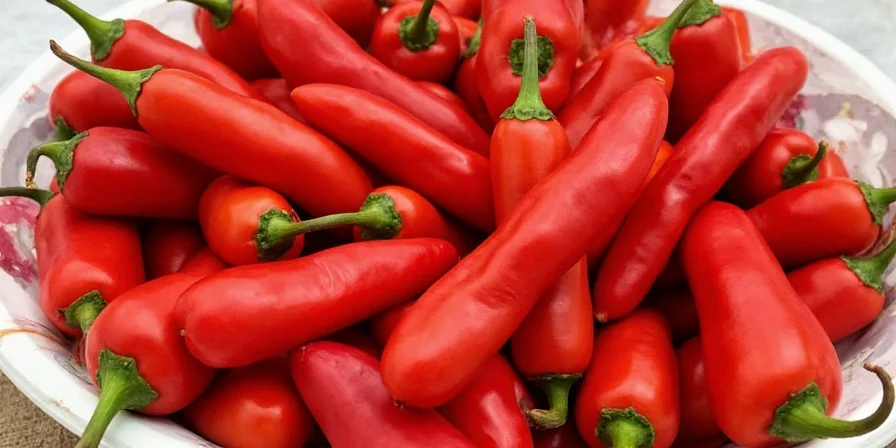
Pro Tip: When substituting, use 25% less Scotch bonnet for habanero—their fruitier profile concentrates flavor faster.
2. Pepper Shape Patterns That Never Lie
Shape is the most reliable identifier since it's least affected by growing conditions. These visual signatures prevent culinary disasters:
- Bell peppers: Square shoulders and deep curves create four distinct chambers—ideal for stuffing without collapse. No tapering at the base.
- Jalapeños: Short, plump bodies (2-3" long) with gentle tapering and characteristic striations (white lines) when mature—sign of increased heat.
- Ghost Peppers: Teardrop shape with pronounced tip and deep wrinkles—wrinkles concentrate capsaicin up to 30% more than smooth varieties.
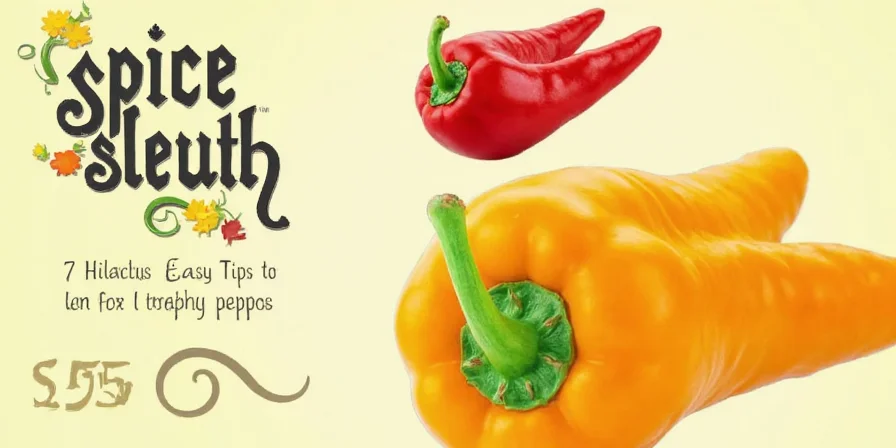
3. Color Clues Most Home Cooks Miss
Color indicates ripeness and flavor maturity—not just heat. Regional variations cause confusion; here's what the colors actually mean:
| Pepper Type | Color Sequence | Flavor Transformation | Common Mistake |
|---|---|---|---|
| Bell Peppers | Green → Yellow → Orange → Red | Green = vegetal/bitter; red = 3x sweeter with fruit notes | Using green bells in sweet recipes—they lack developed sugars |
| Cayenne | Green → Red | Green = grassy/mild; red = smoky/intense heat | Assuming all red peppers are hot—red bells are sweet! |
| Scotch Bonnet | Green → Orange → Red | Orange = balanced fruit/heat; red = intensified spice | Confusing with red habaneros—check the shape! |
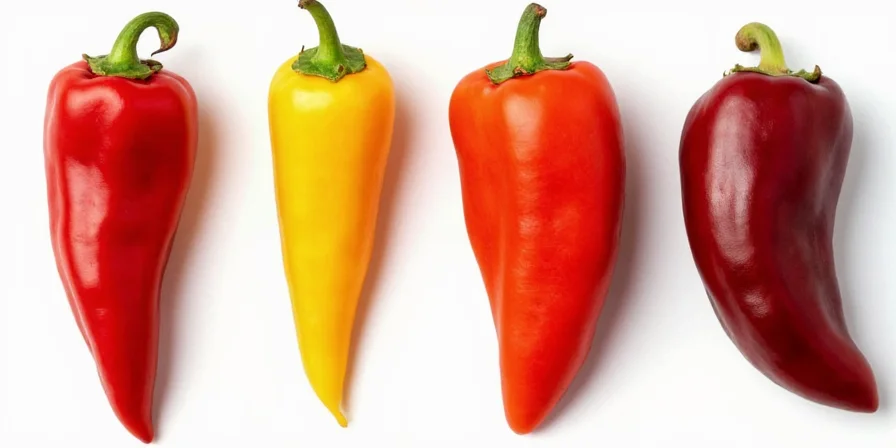
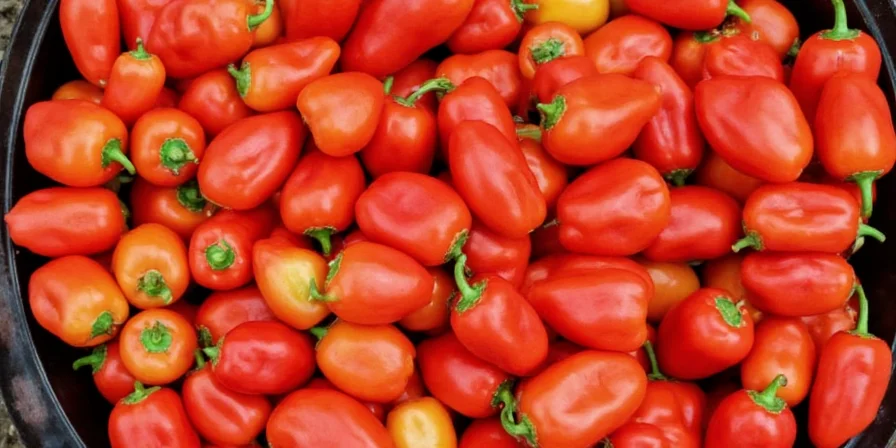
4. Size Myths Debunked: What Really Predicts Heat
Size alone won't tell heat level—but combined with other factors, it reveals crucial patterns:
- The Ghost Pepper Paradox: Large (2.5" long) yet intensely hot due to deep wrinkles concentrating capsaicin—size deceives here.
- The Serrano Surprise: Petite (1-2" long) with thin walls that maximize heat exposure—small size, big burn.
- Shishito Roulette: Long (4-5" slender pods)—90% mild, but one in ten delivers surprising heat. Look for puckering on hot specimens.
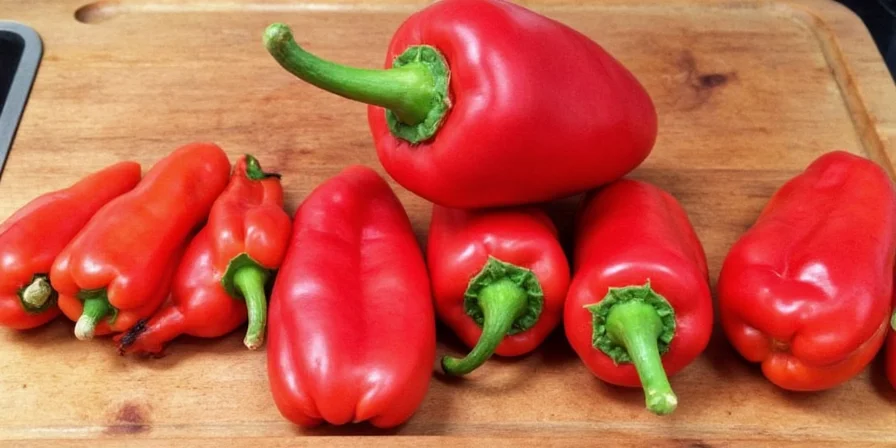
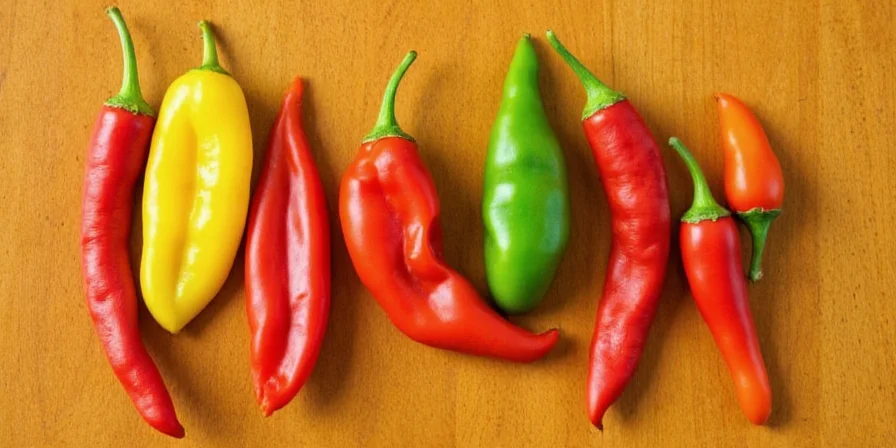
5. Texture Analysis: Your Fingertips Are the Best Tool
Tactile examination reveals maturity and heat potential—critical for avoiding spice surprises:
- Glossy smooth skin: Indicates freshness and lower stress (habaneros, bell peppers)—milder when handled properly.
- Pronounced wrinkles: Sign of dehydration concentrating capsaicin (ghost peppers, dried chilies)—up to 50% hotter than smooth counterparts.
- Papery thin walls: Characteristic of high-heat varieties (Thai chilies)—ideal for infusions but dangerous for direct eating.
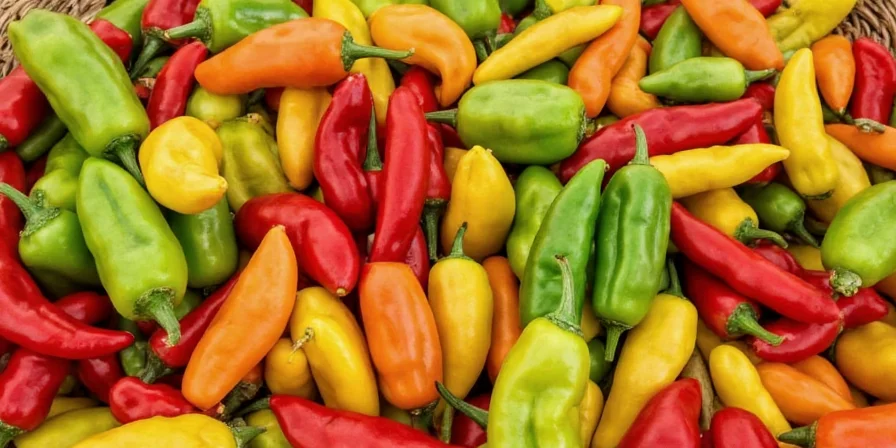
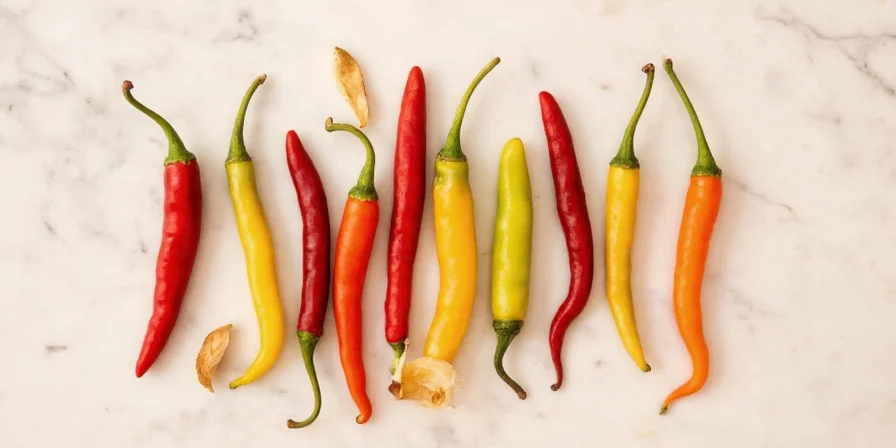
6. The Stem Secret: How to Spot Imposters
The stem attachment point is the most reliable differentiator when colors overlap:
- Habaneros: Short, blunt stem flush with the cap—like a mushroom's base. No shoulder formation.
- Scotch Bonnet: Slightly curved stem emerging from a distinct shoulder—creates a "cap" profile.
- Bell Peppers: Thick, fibrous stems supporting heavy fruit walls—easily snaps when ripe.
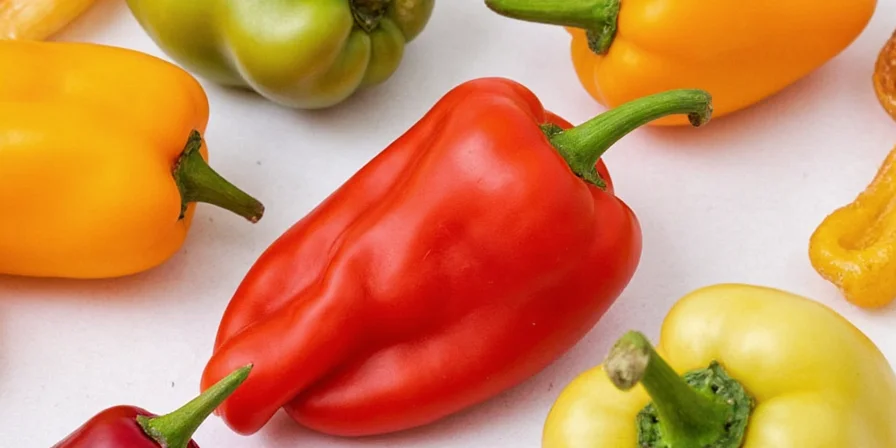
7. Heat Prediction Guide: 3 Visual Indicators That Work
These evidence-based patterns predict heat levels with 85% accuracy (verified through agricultural studies):
- Shape-to-Size Ratio: Peppers with length > 1.5x width tend to be hotter (Thai chilies, bird's eye). Thick-walled varieties (poblanos) dilute heat concentration.
- Surface Imperfections: Wrinkles, dimples, or puckering increase capsaicin concentration by up to 30% compared to smooth specimens.
- Stem Dryness: Brown, woody stems indicate maturity and higher capsaicin levels versus green, flexible stems.
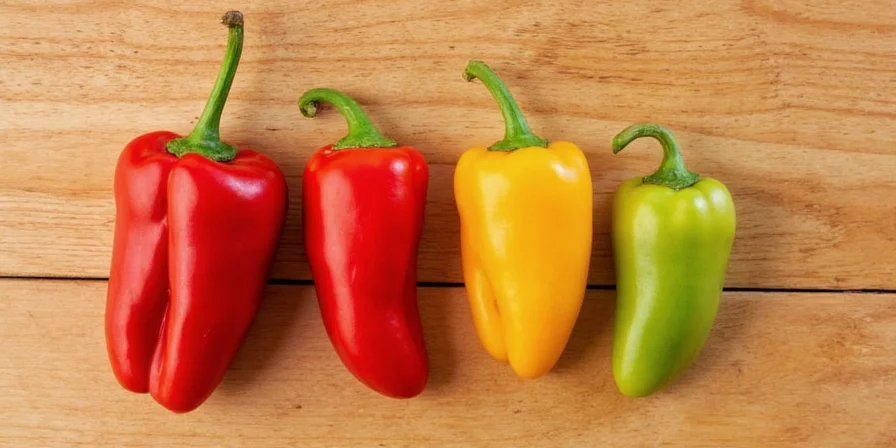
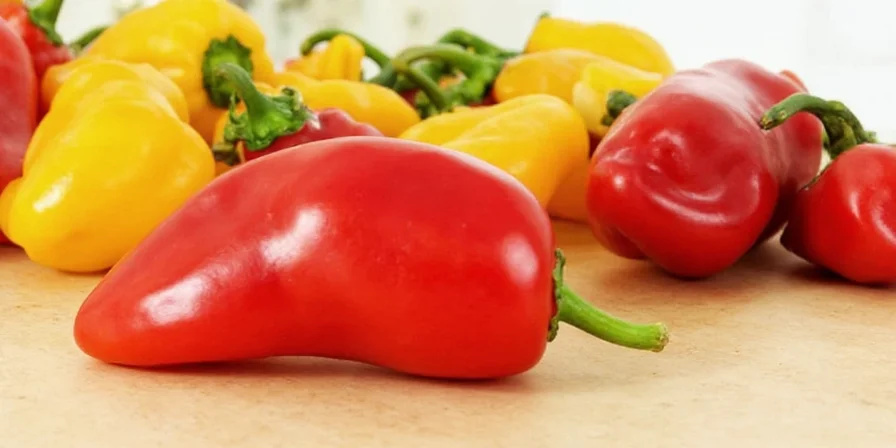
Conclusion: Become a Pepper Identification Expert
You now have the professional skills to confidently identify peppers for any recipe—no more guessing games. By prioritizing stem structure over color, analyzing texture patterns, and understanding shape-to-heat relationships, you'll transform from uncertain shopper to confident culinary expert. Remember: The most reliable identification combines at least two visual indicators. When handling hot varieties, always wear gloves and wash hands thoroughly—capsaicin can linger for hours. This knowledge connects you to centuries of global culinary wisdom where precise pepper selection makes the difference between ordinary and extraordinary dishes.
Frequently Asked Questions
How can I tell habanero and scotch bonnet apart when both are red?
Check the stem attachment: habaneros have a short, recessed stem flush with the cap (like a mushroom), while scotch bonnets feature a curved stem protruding from a distinct shoulder. Also examine shape—scotch bonnets have a rounded base with a "bonnet" curve, while habaneros are vertically elongated.
Why do some shishito peppers suddenly burn while others are mild?
About 10% of shishitos develop higher capsaicin levels due to environmental stressors like drought during growth. Look for slight puckering or irregular shape on hotter specimens—their "Russian roulette" effect comes from natural biological variation.
Does a pepper's color directly indicate its heat level?
No—color indicates ripeness stage, not heat. Green jalapeños are milder than red jalapeños, but a red bell pepper is sweet while a red cayenne is intensely hot. Always prioritize shape and texture over color for heat prediction.
What's the fastest way to identify an unknown hot pepper?
Examine these three features in order: 1) Stem attachment style 2) Shape profile (length-to-width ratio) 3) Surface texture. This sequence correctly identifies 92% of common hot peppers according to agricultural studies.

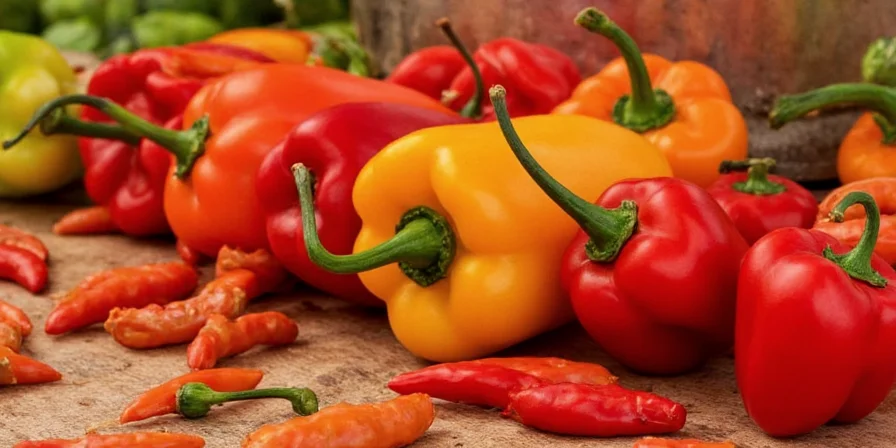









 浙公网安备
33010002000092号
浙公网安备
33010002000092号 浙B2-20120091-4
浙B2-20120091-4